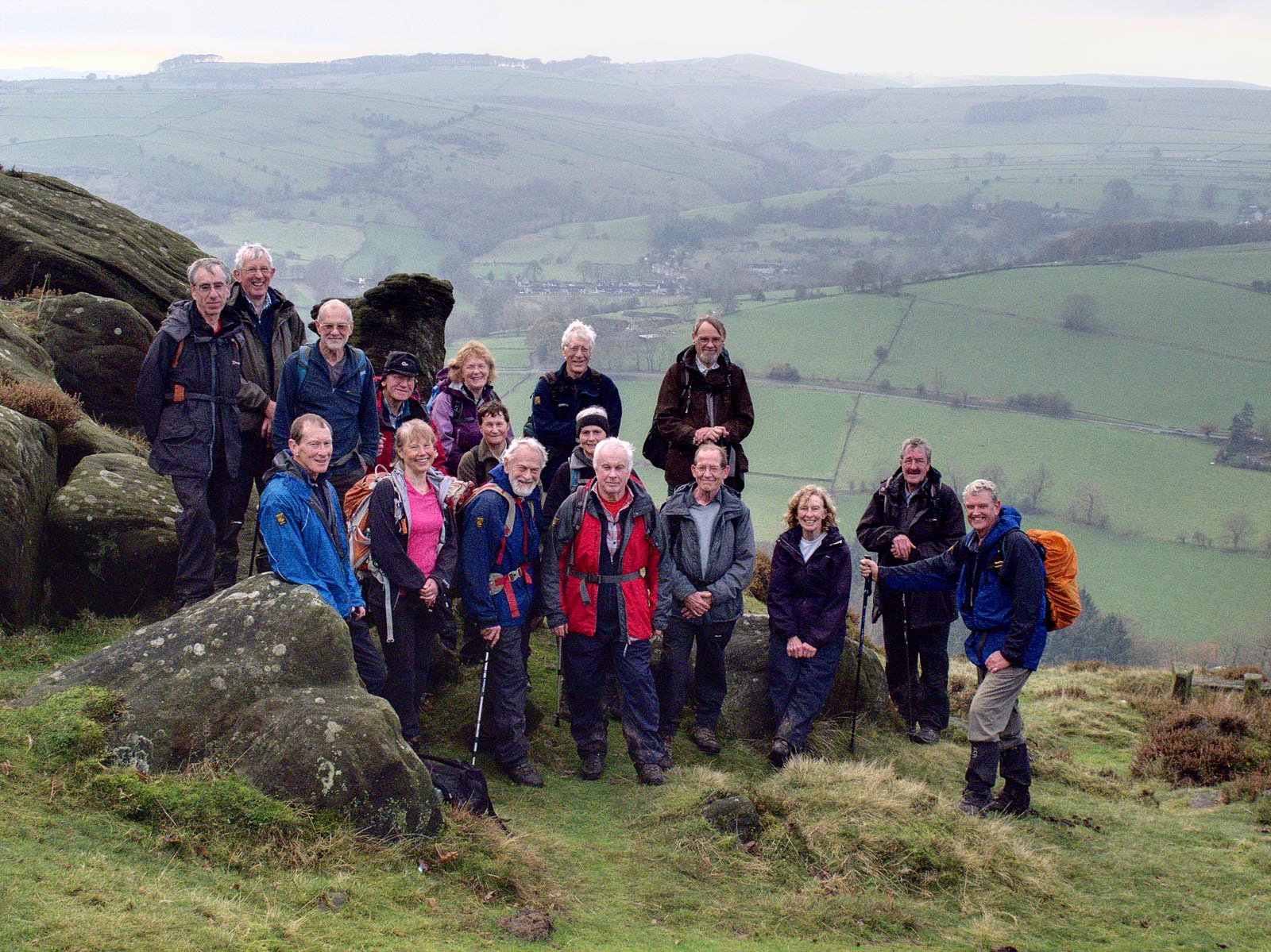Eyam, a picturesque village in the Derbyshire Dales, was the start point of a recent walk by eighteen East Cheshire Ramblers. Known as the “plague village”, Eyam is famed for the fortitude of its villagers, who isolated themselves to reduce spread of the bubonic plague outbreak there in 1666.
Fortunately, the downpour that greeted the walkers on arrival in the car park ceased by the time they set off, led by Ken Hobbs, to climb past a herd of bedraggled alpacas to Eyam Moor. Low cloud obscured their expected vista, but occasionally the sun broke through to throw a spotlight on the village of Hathersage below.
Beyond Stoke Ford, the cloud lifted and they enjoyed a vista of Highlow Wood opposite, and a glimpse of the sun shining on Stanage Edge and Higger Tor in the distance. Soon they passed the charming 17th century Hazelford Hall, a Grade II listed building, then dropped down to cross the swollen Derwent at Leadmill Bridge. After walking alongside the river through Coppice Wood, they began to climb and enjoyed lunch overlooking the river and woods beyond
They continued to Grindleford Station before climbing up through the National Trust Hay Woods, accompanied by the sound of cascading streams. On reaching Froggatt Edge the ramblers were rewarded by views of startling rock formations, backlit by a low sun breaking through clouds. There followed a zigzag scramble downwards through Bee Wood to Froggatt Bridge, also dating from 17th century, where they re-crossed the Derwent.
Finally, they climbed from the river to pass “Riley Graves”, the resting place of John Hancock and six of his children who died within a week from the plague. Eyam Church clock was striking three as the ramblers passed by to complete their 11.5 mile walk.
Ken Hobbs


